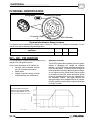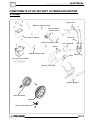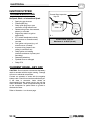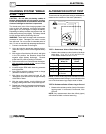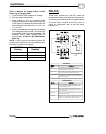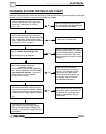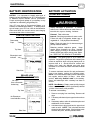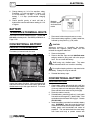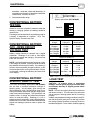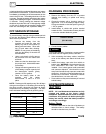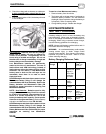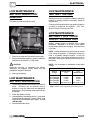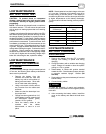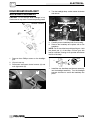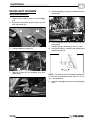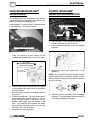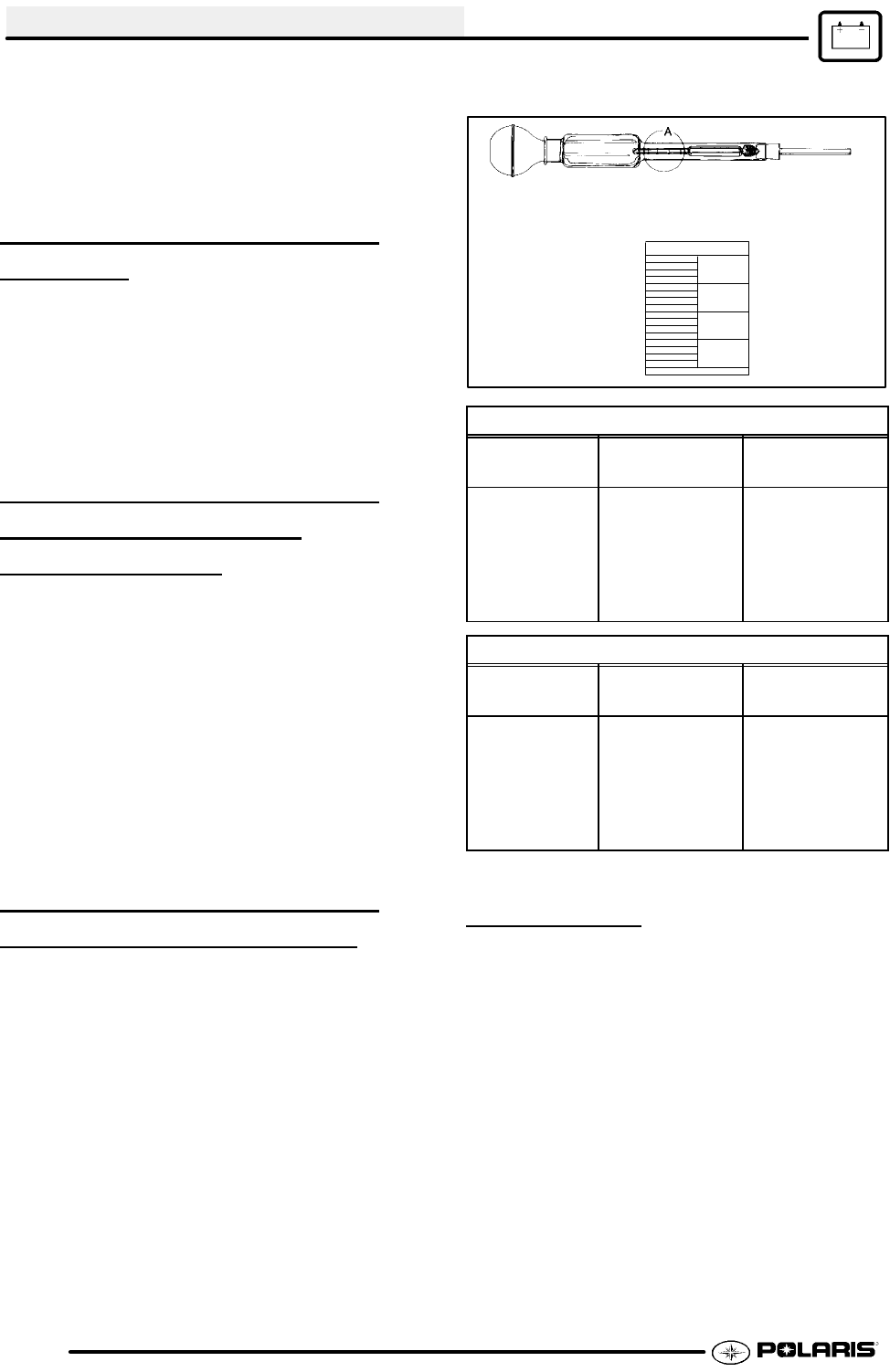
ELECTRICAL
10.24
electrolyte. Avoid skin contact with electrolyte, as
severe burns could result. If electrolyte contacts the
vehicle frame, corrosion will occur.
5. Reinstall the holder strap.
CONVENTIONAL BATTERY
TESTING
Whenever a service complaint is related to either the
starting or charging systems, the battery should be
checked first.
Following are three tests whichcan easilybe madeon
a battery to determine its condition: OCV Test,
Specific Gravity Test and Load Test.
CONVENTIONAL BATTERY
OCV - OPEN
CIRCUIT
VOLTAGE
TEST
Battery voltage should be checked with a digital
multitester. Readings of 12.6 volts or less require
further battery testing and charging. See charts and
Load Test on below.
NOTE: Lead-acid batteries should be kept at or near
a full charge as possible. Electrolyte level should be
kept between the low and full marks. If the battery is
stored or used in a partially charged condition, or with
low electrolyte levels, hard crystal sulfation will form
on the plates, reducing the efficiency and service life
of the battery.
CONVENTIONAL BATTERY
SPECIFIC GRAVITY
TEST
A tool such as a Battery Hydrometer (PN 2870836)
can be used to measure electrolyte strength or
specific gravity. As the battery goes through the
charge/discharge cycle, the electrolyte goes from a
heavy (more acidic) state at full charge to a light (more
water) state when discharged. The hydrometer can
measure state of charge and differences between
cells in a multi-cell battery. Readings of 1.270 or
greater should be observed in a fully charged battery.
Differences of more than .025 between the lowest and
highest cell readings indicate a need to replace the
battery.
Detail A
1.10
1.15
1.20
1.25
1.30
Battery Hydrometer (PN 2870836)
OPEN CIRCUIT VOLTAGE
State of
charge
Conventional
Lead-acid
Low
Maintenance
100%
Charged
75% Charged
50% Charged
25% Charged
0% Charged
12.60V
12.40V
12.10V
11.90V
less than
11.80V
12.70V
12.50V
12.20V
12.0V
less than 11.9V
SPECIFIC GRAVITY
State of
charge*
Conventional
lead-acid
Low
Maintenence
100%
Charged
75% Charged
50% Charged
25% Charged
0% Charged
1.265
1.210
1.160
1.120
less than 1.100
1.275
1.225
1.175
1.135
less than 1.115
*At80_F
NOTE: Subtract .01 from the specific gravity reading at 40_ F.
LOAD TEST
CAUTION: To prevent shock or component
damage, remove spark plug high tension leads
and connect securely to engine ground before
proceeding.
NOTE: This test can only be performed on machines
with electric starters. This test cannot be performed
with an engine or starting system that is not working
properly.
A battery may indicate a full charge condition in the OCV
test and the specific gravity test, but still may not have
the storage capacity necessary to properly function in
the electrical system. For this reason, a battery capacity



